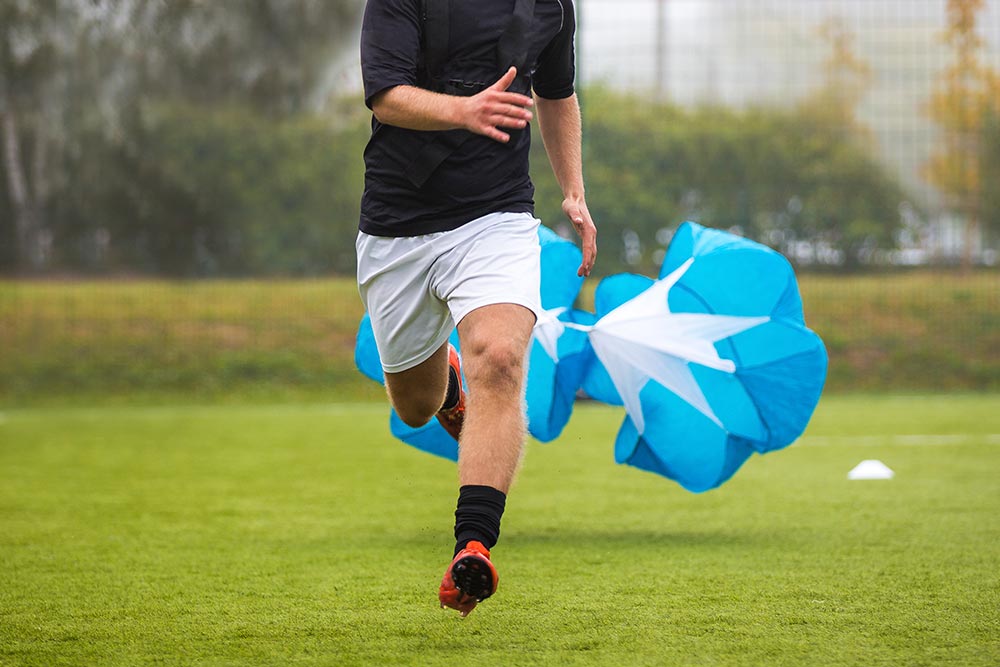Boost Your Metabolism with Sprint Intervals

Alyssa Bialowas
Whether training for races or team sports, sprint interval training is used by athletes to reach peak personal fitness. Similar to high intensity interval training (HIIT) more broadly, sprint interval training boosts your metabolism for several hours after you’ve competed your workout. This contributes to weight loss and fat loss efforts in your spring training regimen.
Related Article: Push or Pull? Sprinting Mechanics and You
These sprint interval tips will aid weight loss and increase overall stamina:
1. Make small, progressive changes to your interval routine
Record all interval workouts so you can keep track of them and make small incremental changes to see results. Vary the types of intervals used, such as “sprint 1 minute/walk 1 minute x 3”, or “run for three minutes, walk for 30 seconds x 2”, “sprint 30 seconds, rest 30 seconds, x 4”. Make sure to track all intervals including time and seconds, miles or distance covered, and calories burned so you can refer to your notes and adjust for future progress.
2. Alternative interval training days
 HIIT imposes intense force on your body, make sure to alternate sprint interval training days to decrease wear and tear on your body. If you’re new to sprinting, include intervals in your workout only one to two times a week to prevent injury. Include longer distance running at a lower intensity to prevent injury, for example one day a week include a long interval such as running quickly but not at your peak, for 4 minutes, walk for 3 minutes. Because this is at a lower intensity, your total workout time can reach 45 minutes. The next workout, introduce quicker intervals and start sprinting, for example, sprint for 45 seconds, walk for 2 minutes, for 25 minutes. The more intense your intervals are, the less time you need to achieve results.
HIIT imposes intense force on your body, make sure to alternate sprint interval training days to decrease wear and tear on your body. If you’re new to sprinting, include intervals in your workout only one to two times a week to prevent injury. Include longer distance running at a lower intensity to prevent injury, for example one day a week include a long interval such as running quickly but not at your peak, for 4 minutes, walk for 3 minutes. Because this is at a lower intensity, your total workout time can reach 45 minutes. The next workout, introduce quicker intervals and start sprinting, for example, sprint for 45 seconds, walk for 2 minutes, for 25 minutes. The more intense your intervals are, the less time you need to achieve results.
Related Article: HIIT Hill Workouts For Runners
3. Utilize proper running form
There are many tools available online to ensure that your fundamental running form is correct. While sprinting, lean forward slightly and use the balls of your feet to generate force from pushing off the ground. Keep the weight of your arms light (do not flex your muscles or make them tense), and your elbows at 90 degrees. Your arms will naturally swing freely from your shoulders, and make sure your arms are not flailing away from your body.
4. Use appropriate running gear to keep track of your intervals
Proper running shoes are key in stabilizing your ankle while sprinting. Ankle stabilizing is key to preventing injury and ankle sprains, which can be common to sprinters. Utilize a Fitness Watch to time your sprints accurately! To track true progress, you must be exact with your interval timing.
5. Cool down and stretch
Sprint intervals are very challenging on your body, so make sure your body is always prepared to go all out by eating properly. It is essential to get proper rest, and after an intense workout, take the appropriate time to cool down and stretch. Holding your static stretch for extended periods of time will help repair your muscles and prevent injury. Make sure your follow up workout with a recovery exercise day such as jogging, biking, or light strength training.
Recover faster with Recoup’s Cold Roller.
Related Article: How To Treat 7 Common Running Injuries
You Might Like:











